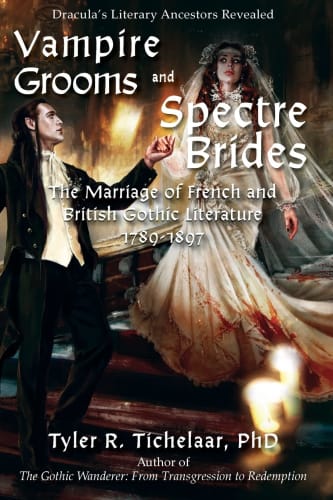
Vampire Grooms and Spectre Brides
The Marriage of French and British Gothic Literature, 1789-1897
Many British and French Gothic novels are being rediscovered today that are part of the second Gothic Golden Age, an age too often overlooked, but integral to the evolution of the Gothic. While nationalism influences these works, they are a melting pot of ideas and styles from both nations. Consequently, the only way to truly understand the Gothic tradition in British literature is to understand that tradition in French literature and vice-versa. In Vampire Grooms and Spectre Brides, Tyler R. Tichelaar, PhD, argues there is, in fact, no such thing as French Gothic or British Gothic literature, or even British or French literature during the nineteenth century. Works like The Count of Monte Cristo, Dracula, A Tale of Two Cities, and The Hunchback of Notre Dame can be better understood when placed within the context of the blended tradition since novels in both languages and in translation continually crisscrossed the English Channel, only to return in new iterations throughout the century. From John Polidori to Paul Féval and Bram Stoker, and from Mrs. Radcliffe to Eugène Sue and Charles Dickens, the Gothic produced some of the strangest, most fascinating, and most significant novels ever written. In bringing together these works, some only recently translated or not fully translated at all, Vampire Grooms and Spectre Brides provides a missing context that will help redefine Gothic literature for future generations and serve as a blood transfusion to some works long thought dead. British and French authors discussed include: Sade * Radcliffe * Lewis * Scott * Polidori * Bérard * Nodier * Hugo * Ainsworth * Quinet * Sue * Féval * Reynolds * Dumas * Bulwer-Lytton * Dickens * Nizet * Verne * Stoker * and many more!
Vampire Grooms and Spectre Brides
The Marriage of French and British Gothic Literature, 1789-1897
